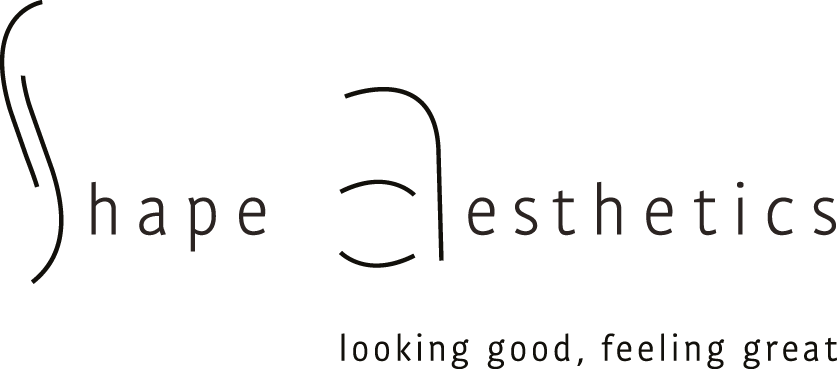Skin peels, different types and for which skin types suitable?
An excellent way to give your skin a renewed look is through skin peels. These treatments come in different varieties and can improve your skin’s texture, reduce fine lines and wrinkles, and treat hyperpigmentation and acne. But how do you determine which skin peeling is most suitable for your skin type? In this blog we discuss the various types of peels and which variant suits your skin best.
Skin peels are cosmetic treatments often performed by professionals such as dermatologists, skin therapists and beauticians. During the treatment, a chemical solution is applied to the skin consisting of acids such as glycolic acid, salicylic acid, lactic acid or trichloroacetic acid (TCA), which act as exfoliants and remove the top layer of dead skin cells to reveal healthier, smoother skin.
The choice of acid type, concentration and duration of treatment depend on your skin type and your specific needs. For example, glycolic acid has the smallest molecular structure of all alpha hydroxy acids and can penetrate deeper into the skin, while salicylic acid is better suited for treating acne due to its anti-inflammatory properties.
Skin peels are commonly used to treat a wide variety of skin conditions, including acne, fine lines and wrinkles, pigmentation problems, sun damage, and scars. After treatment, the skin may be slightly red and sensitive, but these side effects usually disappear within a few days. The result is fresher, smoother and more youthful skin.
There are three types of skin peels: superficial, medium and deep peels.
Superficial peels are the least aggressive form of chemical peels, making them a great option for people new to skin peels. They usually contain alpha hydroxy acids (AHAs) or beta hydroxy acids (BHAs), which help remove dead skin cells and improve the texture of the skin. In addition to reducing fine lines and wrinkles, superficial peels can also help fade pigmentation and reduce the size of pores. They are suitable for all skin types, even those with sensitive skin, as they are less intense than deeper peels.
Medium peelings
Medium skin peels are a step up from superficial peels and are designed to give more pronounced results. Unlike superficial peels, medium peels are usually made of trichloroacetic acid (TCA) and can achieve deeper penetration of the skin. This makes it possible to reduce fine lines and wrinkles, treat hyperpigmentation and improve the texture of the skin. Medium peels are generally suitable for most skin types, but not recommended for those with sensitive skin due to the risk of skin irritation. It is important to remember that medium peels may have a slightly longer recovery time than superficial peels, as the skin may flake slightly and be more sensitive after the treatment.
Medium peels: combinations of 35% TCA with Jessner’s solution or 70% glycolic acid
Deep peelings
Deep skin peels are the most intensive form of chemical peels and are generally used to treat serious skin problems such as deep wrinkles, sun damage and serious pigmentation problems. Phenol peels are the most aggressive form of peels and are made from phenol. These peels are generally only performed by dermatologists and plastic surgeons.
Deep peels are more powerful than superficial and medium peels and are made from solutions such as greater than 50% TCA, or combinations of croton oil and phenol. While they can be effective for treating serious skin problems, they are not suitable for all skin types. This is because the harsh nature of phenol peels can destroy the pigment in the skin, causing white patches to form. Therefore, phenol peels are usually recommended for lighter skinned people and not recommended for darker skinned people.
It is also important to note that phenol peels are not suitable for people with sensitive skin or those who have recently undergone certain types of skin treatments, such as laser or microdermabrasion. It is therefore essential to consult with a specialist which type of peeling best suits your skin and what risks are involved.
Which skin peels best suit your skin type?
Now that you know which types of skin peels there are, it is important to know which one suits your skin type best. Below you will find an overview of the different skin types and which peels are best for each type.

Dry skin: With dry skin, it is important to opt for a mild peeling that does not dry out the skin further. A peel with a low concentration of lactic acid or glycolic acid may be appropriate, as these acids exfoliate the skin without irritating or drying it out. It is important to be careful and start with a low concentration and short exposure time to avoid irritation. After a peeling, it is recommended to use a moisturizing product to hydrate and soothe the skin. Learn more about dry skin
Oily skin : A medium peel with TCA (trichloroacetic acid) can help treat oily skin. TCA is a stronger acid than glycolic acid or salicylic acid and penetrates deeper into the skin. It can help reduce excess oil production by reducing the sebaceous glands and can also improve skin texture by removing dead skin cells and stimulating the production of new collagen. However, it is important to know that a medium peel with TCA is not suitable for all skin types. It can be too strong for dry or sensitive skin and lead to irritation or excessive dryness.
Sensitive skin: People with sensitive skin often have skin that reacts sensitively to external influences, such as certain ingredients in cosmetics or exposure to the sun. The use of peels can also lead to skin irritation if not handled with care. Therefore, it is recommended that people with sensitive skin only use superficial peels made from low concentrated and mild AHAs (alpha hydroxy acids) or BHAs (beta hydroxy acids) as these ingredients are less irritating than some of the other ingredients used in deeper peels. used.
It is also important to slowly accustom sensitive skin to peels to avoid irritation. This means that the frequency and strength of the peels should be built up gradually, for example by starting with a lower concentration of AHAs or BHAs and slowly increasing it as the skin gets used to it. It is also important to remember that overuse of peels can damage the skin. That is why it is important to follow the instructions carefully and not to peel too often or too strongly.
Acne-prone skin: With acne, there is excessive sebum production, inflammation and blockage of the skin pores, which leads to acne. To address this problem and reduce acne, a TCA or salicylic acid peel can help. TCA is a chemical peel that removes the outer layer of the skin and stimulates collagen and elastin production, while salicylic acid helps exfoliate the skin and reduce inflammation. However, it is important to proceed with caution when using peels and gradually accustom the skin to the peel to avoid irritation.
Dark skin: Asians and people with dark skin generally have a higher concentration of melanin (pigment) in their skin. Skin irritation or inflammation can cause more dark spots. However, deep peels such as TCA peels can cause too much irritation and inflammation, which increases the risk of hyperpigmentation. Superficial peels are therefore recommended for people with dark skin, as they gently exfoliate the top layer of the skin without increasing the risk of pigment changes.
It is important to proceed with caution when using peels on dark skin and build up use slowly to reduce the risk of irritation and pigment changes. More about dark pigment spots. Therefore, it is advisable to always seek advice from a dermatologist before undergoing a skin peel to ensure it is suitable for your skin and to minimize any risks.
In short, a peel can be an effective way to rejuvenate your skin and keep it looking radiant, but it’s important to choose the right type of peel for your skin type and to be careful to avoid irritation and pigment changes. to prevent.
For any questions you can contact us at info@skn2.nl or visit the website www.skn2.nl
